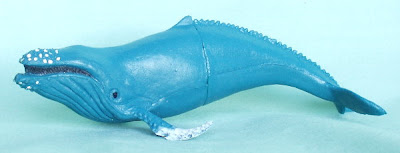One of our many highly-detailed and stylish animal pins!
Our Painted Lobster and Shrimp Pins
These gorgeous and unusual lobster and shrimp pins are made in Washington and Idaho by a team of U.S. artists. The high-quality lapel pins or oversized tie tacks are unique. They are exquisitely detailed; the quality of the painting elevates each pin to an item of wearable art. Each one is cast in pewter and painted by hand. You will be delighted with the professional quality and artistic details of your piece of fish jewelry. The finish is extremely smooth and shiny, as you can see by the highlight from the scanner. It is also extremely durable. The pin is secured by two sturdy tacks on the back so it stays upright, and the finished product is not only gorgeous, but satisfyingly substantial in weight. It can be used as a lapel pin, hat pin, tie tack, and more. These collectible animal pins are heirloom quality, and the details are so realistic, they are found in museum gift shops and bought by organizations in need of the perfect animal to represent their group.
About Lobsters and Shrimp
For all their bug-like appearance, lobster and shrimp represent some of the most sought-after seafoods, both by humans and large marine animals.
Clawed lobster fossils date back until at least the Cretaceous period, over 65 million years ago. Although their appearance is similar to scorpions, lobsters are not arachnids…they are arthropods, with ten legs total (the first three sets have claws, and the first of these are much bigger than the others). Lobsters are amongst the very few animals that show no detrimental effects of aging, continuing to grow and increase in fertility until an outside force (disease, predation, injury) causes death. Generally, lobsters are less than 20 inches long. The largest lobster was caught in Canada and weighed over 44 pounds.
Lobsters live in all oceans and may live as deep as 2000 fathoms, or 3700 meters. They are omnivores, preferring live fish, crustaceans and some plant life. In the wild lobsters have been known to scavenge, and have resorted to cannibalism in captivity where all other food sources are absent.
Lobster is an extremely popular and sought-after food. All commercial lobster are caught wild. While attempts to domesticate and farm lobster continue, none have been commercially successful. Lobster's commercial popularity is relatively new, however. Prior to the mid-19th century in North America, lobster was considered a second-rate cuisine, fit only for the lowest members of society. Servants would specify that they "would not eat lobster more than twice a week" in their employment agreements. Well into the 20th century, lobster was used as fertilizer, fish bait, and a low-priced canned staple item, similar to tuna today.
Many different, unrelated forms of crustacean fall under the heading of “shrimp”. Most shrimp require a marine environment to grow and reproduce…a very few species can tolerate freshwater environments. Shrimp can collect in schools or survive independently, and form the basic food source for many marine predators. Like lobster, shrimp walk very slowly, but swim (backwards) very quickly by snapping their tail. Unlike lobster, shrimp have been successfully farmed for human consumption since the 1970s, with almost a third of the world’s commercial shrimp supplied by farming.
While the word "prawn" tends to be used in North America to describe any big shrimp, there are biological differences between true shrimp and true prawns. Biologists can distinguish between the two by their gill structure, but an easy way to tell is to examine the segments that form the shrimp’s abdomen. On a shrimp, the second segment overlaps both the first and third segments. On a prawn, it overlaps only the first.
This blog is sponsored by Tapir and Friends Animal Store.





















